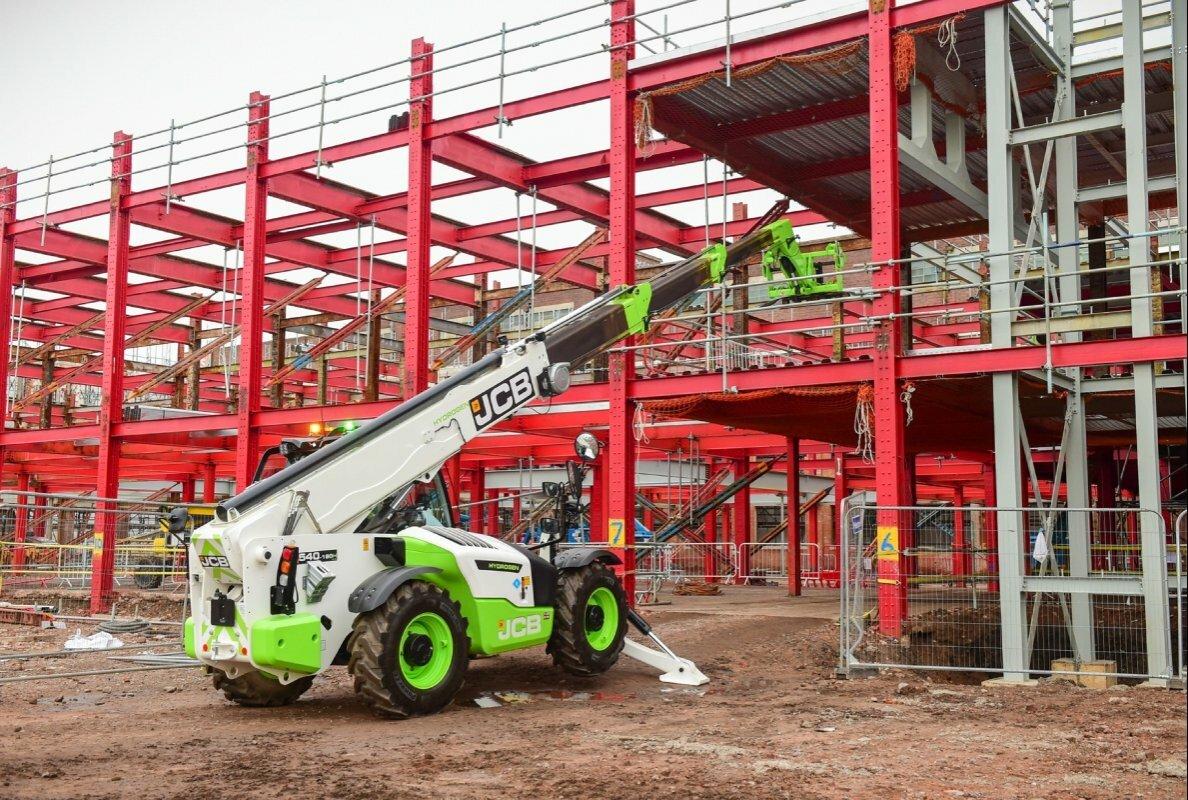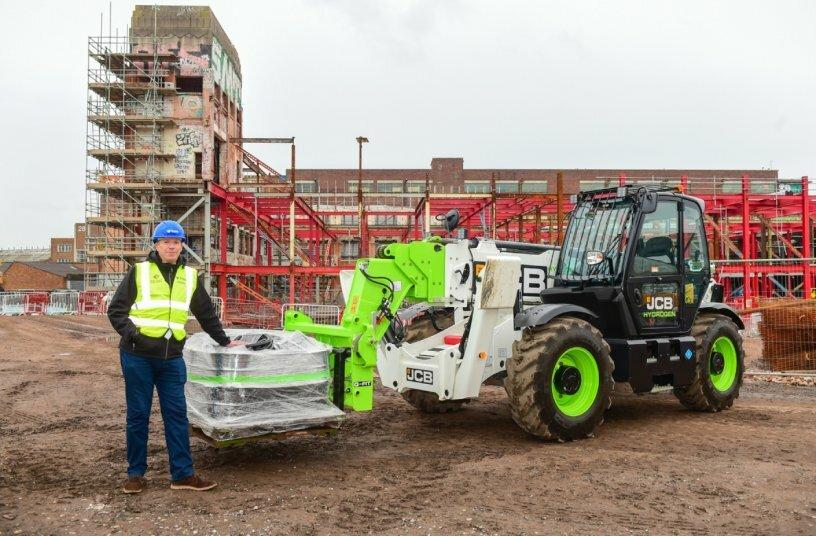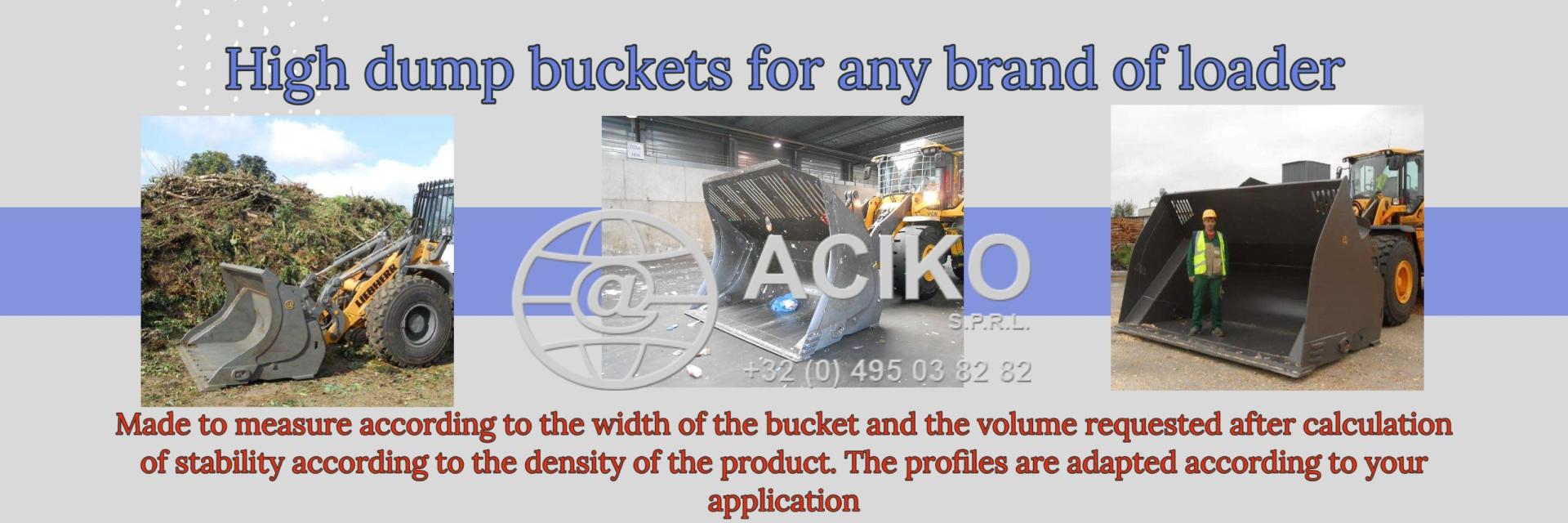JCB Ease of refuelling hailed as hydrogen Loadall goes on test
 18/03/25-FR-English-NL-footer
18/03/25-FR-English-NL-footer
La simplicité du ravitaillement en carburant est saluée par le Loadall à hydrogène en phase de test

 The JCB hydrogen Loadall on test in Digbeth,Birmingham IMAGE SOURCE: JCB Press Office-Colin Evison, BAM’s Innovation Technical Lead
The JCB hydrogen Loadall on test in Digbeth,Birmingham IMAGE SOURCE: JCB Press Office-Colin Evison, BAM’s Innovation Technical Lead
IMAGE SOURCE: JCB Press Office
BAM Construction a testé avec succès le chariot télescopique Loadall à hydrogène de JCB sur le projet de régénération de l'usine à thé de Birmingham.
Le Loadall JCB 540-180H, propulsé par un moteur à combustion à hydrogène, offre des émissions zéro carbone avec la même puissance et le même couple que son homologue diesel.
Le ravitaillement du Loadall à hydrogène est simple, grâce à une remorque de ravitaillement qui se connecte et se remplit d'une simple pression sur un bouton.
BAM Construction souligne l'importance de l'hydrogène pour atteindre ses ambitieux objectifs de zéro émission nette, notamment en matière de réduction des émissions de Scope 3.
JCB a cumulé plus de 50 000 heures de tests sur ses moteurs à combustion à hydrogène, démontrant leur viabilité comme futur carburant décarboné pour les engins de chantier et agricoles.
L'entrepreneur principal BAM Construction a salué la simplicité du processus de ravitaillement du chariot télescopique Loadall à hydrogène de JCB après l'avoir testé sur un important projet de régénération dans les Midlands.
L'entreprise a testé le premier JCB 540-180H Loadall sur le projet de régénération de l'usine à thé de Digbeth, à Birmingham.
Équipée d'un moteur à combustion à hydrogène développé par JCB dans son usine du Derbyshire, la machine offre une transmission zéro émission de carbone, offrant les mêmes caractéristiques de puissance et de couple que le modèle diesel conventionnel.
Colin Evison, responsable technique de l'innovation chez BAM, a déclaré : « Nous commençons à explorer l'utilisation de l'hydrogène comme carburant alternatif. Il était important d'utiliser la machine à hydrogène sur un chantier réel. Nous l'avons testée en conditions d'essai et nous savons qu'elle fonctionne techniquement, mais la tester sur un chantier réel fait une réelle différence.
« Nous n'avons constaté aucune différence dans le fonctionnement de la machine. Nous devons ravitailler la machine différemment, mais c'est un processus simple et direct.
JCB livre l'hydrogène sur le site dans une remorque de ravitaillement, qui se connecte simplement au Loadall et se ravitaille d'une simple pression sur un bouton.
Maggie Hall, responsable du développement durable chez BAM, a ajouté : « Le développement durable est l'une des valeurs fondamentales de notre entreprise et nous nous sommes fixés des objectifs ambitieux de neutralité carbone. L'un de ces objectifs est de diviser par deux nos émissions de type « scope 3 » par rapport à nos niveaux de 2019. Ces émissions sont celles que nous pouvons influencer, mais que nous ne pouvons pas contrôler directement. Une part importante de nos émissions de type « scope 3 » est liée à notre chaîne d'approvisionnement ; il est donc crucial que nous collaborions avec elle pour réduire nos émissions.
« La transition vers la neutralité carbone entraînera de nombreux changements pour notre secteur, et l'hydrogène est un élément important de cette solution. Son entretien et son ravitaillement sont faciles. C'est une étape cruciale pour réduire nos émissions. »
Tim Burnhope, Directeur des Projets Spéciaux du Groupe JCB, a ajouté : « Nous travaillons depuis plus de trois ans au développement de ce fantastique moteur à combustion à hydrogène et avons passé ce temps à tester les machines sur les sites JCB, cumulant ainsi plus de 50 000 heures de tests.
Nous avons maintenant installé des machines à combustion à hydrogène JCB sur les sites de nos clients. Nous prouvons à nos clients que c'est possible, que l'hydrogène peut être l'avenir des engins de chantier et agricoles, le carburant mobile du futur, sans carbone, ne produisant que de la vapeur propre.»
NJC.© Info JCB
------------------------------------------------------------------------------------------------------------
 18/03/25-English
18/03/25-English
Ease of refuelling hailed as hydrogen Loadall goes on test

 The JCB hydrogen Loadall on test in Digbeth,Birmingham IMAGE SOURCE: JCB Press Office-Colin Evison, BAM’s Innovation Technical Lead
The JCB hydrogen Loadall on test in Digbeth,Birmingham IMAGE SOURCE: JCB Press Office-Colin Evison, BAM’s Innovation Technical Lead
IMAGE SOURCE: JCB Press Office
BAM Construction has successfully tested JCB’s hydrogen-powered Loadall telescopic handler on the Tea Factory regeneration project in Birmingham.
The JCB 540-180H Loadall, powered by a hydrogen combustion engine, offers zero-carbon emissions with the same power and torque as its diesel counterpart.
The refuelling process for the hydrogen Loadall is straightforward, facilitated by a refuelling trailer that connects and refuels at the touch of a button.
BAM Construction emphasizes the importance of hydrogen in achieving their ambitious net zero targets, particularly in reducing Scope 3 emissions.
JCB has accumulated over 50,000 hours of testing on their hydrogen combustion engines, demonstrating their viability as a future carbon-free fuel for construction and agricultural equipment.
Leading contractor BAM Construction has hailed the simplicity of the refuelling process of JCB’s hydrogen powered Loadall telescopic handler after testing the machine on a major Midlands regeneration project.
The company has been trialling the first JCB 540-180H Loadall on the Tea Factory regeneration project in Digbeth, Birmingham.
Powered by a hydrogen combustion engine developed by JCB at its plant in Derbyshire, the machine offers a zero-carbon emission driveline, that offers the same power and torque characteristics as the conventional diesel-powered model.
Colin Evison, BAM’s Innovation Technical Lead, said: “We’re starting to explore the use of hydrogen as an alternative fuel. It was important to get the hydrogen fuel machine on a real construction site. We’ve seen it in test environments, and we know that technically it does work, but putting it to the test on a real site makes a real difference.
“We’ve noticed no difference in the way the machine operates. We have to refuel the machine in a different way, but it’s a simple and straightforward process.”
JCB has been delivering hydrogen to the site in a refuelling trailer, that simply connects to the Loadall and refuels at the touch of a button.
Maggie Hall, BAM’s Environmental Sustainability Manager, added: “Sustainability is one of our firm’s core values and we have set ambitious net zero targets. One of those targets is to halve our Scope 3 emissions, compared to our 2019 levels. Scope 3 emissions are the ones that we can influence, but we can’t directly control. A significant part of our Scope 3 emissions is associated with our supply chain, so it’s crucial that we work with the supply chain to reduce emissions.
“The road to net zero will introduce lots of different things to our industry and hydrogen is an important part of that solution. It can be easily serviced and easily refuelled. It’s a really important step to take to reduce our emissions.”
JCB Group Director – Special Projects Tim Burnhope added: “We’ve been working for over three years to develop this fantastic hydrogen combustion engine and we’ve spent that time testing the machines on JCB sites, accumulating over 50,000 hours of testing.
“Now we’ve put JCB hydrogen combustion machines on to customer sites. We are proving with our customers that this really can work, that hydrogen can be the future for construction and agricultural equipment, the mobile fuel of the future, and one that is carbon-free, producing nothing but clean steam.”
NJC.© Info JCB
------------------------------------------------------------------------------------------------------------
 18/03/25-NL
18/03/25-NL
Gemakkelijk tanken geprezen bij test waterstof Loadall

 The JCB hydrogen Loadall on test in Digbeth,Birmingham IMAGE SOURCE: JCB Press Office-Colin Evison, BAM’s Innovation Technical Lead
The JCB hydrogen Loadall on test in Digbeth,Birmingham IMAGE SOURCE: JCB Press Office-Colin Evison, BAM’s Innovation Technical Lead
IMAGE SOURCE: JCB Press Office
BAM Construction heeft de waterstof-aangedreven Loadall-telescooplader van JCB succesvol getest op het Tea Factory-regeneratieproject in Birmingham.
De JCB 540-180H Loadall, aangedreven door een waterstofverbrandingsmotor, biedt nul-koolstofemissies met hetzelfde vermogen en koppel als zijn dieseltegenhanger.
Het tankproces voor de waterstof Loadall is eenvoudig en wordt gefaciliteerd door een tankwagen die met één druk op de knop wordt aangesloten en getankt.
BAM Construction benadrukt het belang van waterstof bij het behalen van hun ambitieuze netto-nuldoelstellingen, met name bij het verminderen van Scope 3-emissies.
JCB heeft meer dan 50.000 testuren verzameld op hun waterstofverbrandingsmotoren, wat hun levensvatbaarheid als toekomstige koolstofvrije brandstof voor bouw- en landbouwmachines aantoont.
Hoofdaannemer BAM Construction heeft de eenvoud van het tankproces van JCB's op waterstof aangedreven Loadall-telescopische handler geprezen nadat de machine was getest op een groot regeneratieproject in de Midlands.
Het bedrijf heeft de eerste JCB 540-180H Loadall getest op het regeneratieproject Tea Factory in Digbeth, Birmingham.
De machine wordt aangestuurd door een waterstofverbrandingsmotor die door JCB is ontwikkeld in zijn fabriek in Derbyshire en biedt een aandrijflijn met nul CO2-uitstoot, die dezelfde vermogens- en koppelkenmerken biedt als het conventionele dieselmodel.
Colin Evison, Innovation Technical Lead van BAM, zei: "We beginnen het gebruik van waterstof als alternatieve brandstof te onderzoeken. Het was belangrijk om de waterstofbrandstofmachine op een echte bouwplaats te krijgen. We hebben het in testomgevingen gezien en we weten dat het technisch gezien werkt, maar het testen ervan op een echte locatie maakt echt een verschil.
"We hebben geen verschil gemerkt in de manier waarop de machine werkt. We moeten de machine op een andere manier bijtanken, maar het is een eenvoudig en duidelijk proces.”
JCB levert waterstof aan de locatie in een tankwagen, die eenvoudig op de Loadall wordt aangesloten en met één druk op de knop wordt bijgetankt.
Maggie Hall, Environmental Sustainability Manager bij BAM, voegde toe: “Duurzaamheid is een van de kernwaarden van ons bedrijf en we hebben ambitieuze netto nuldoelen gesteld. Een van die doelen is om onze Scope 3-emissies te halveren, vergeleken met onze niveaus van 2019. Scope 3-emissies zijn de emissies die we kunnen beïnvloeden, maar we kunnen ze niet rechtstreeks controleren. Een aanzienlijk deel van onze Scope 3-emissies is gekoppeld aan onze toeleveringsketen, dus het is cruciaal dat we samenwerken met de toeleveringsketen om de emissies te verminderen.
“De weg naar netto nul zal veel verschillende dingen introduceren in onze industrie en waterstof is een belangrijk onderdeel van die oplossing. Het kan eenvoudig worden onderhouden en eenvoudig worden bijgetankt. Het is een heel belangrijke stap om onze emissies te verminderen.”
JCB Group Director – Special Projects Tim Burnhope voegde toe: “We hebben meer dan drie jaar gewerkt aan de ontwikkeling van deze fantastische waterstofverbrandingsmotor en we hebben die tijd besteed aan het testen van de machines op JCB-locaties, waarbij we meer dan 50.000 testuren hebben verzameld.
“Nu hebben we JCB-waterstofverbrandingsmachines op de locaties van klanten geplaatst. We bewijzen met onze klanten dat dit echt kan werken, dat waterstof de toekomst kan zijn voor bouw- en landbouwmachines, de mobiele brandstof van de toekomst, en een die koolstofvrij is en niets anders produceert dan schone stoom.”
NJC.© Info JCB
---------------------------------------------------------------------------------------------------------------
Date de dernière mise à jour : 17/03/2025
















